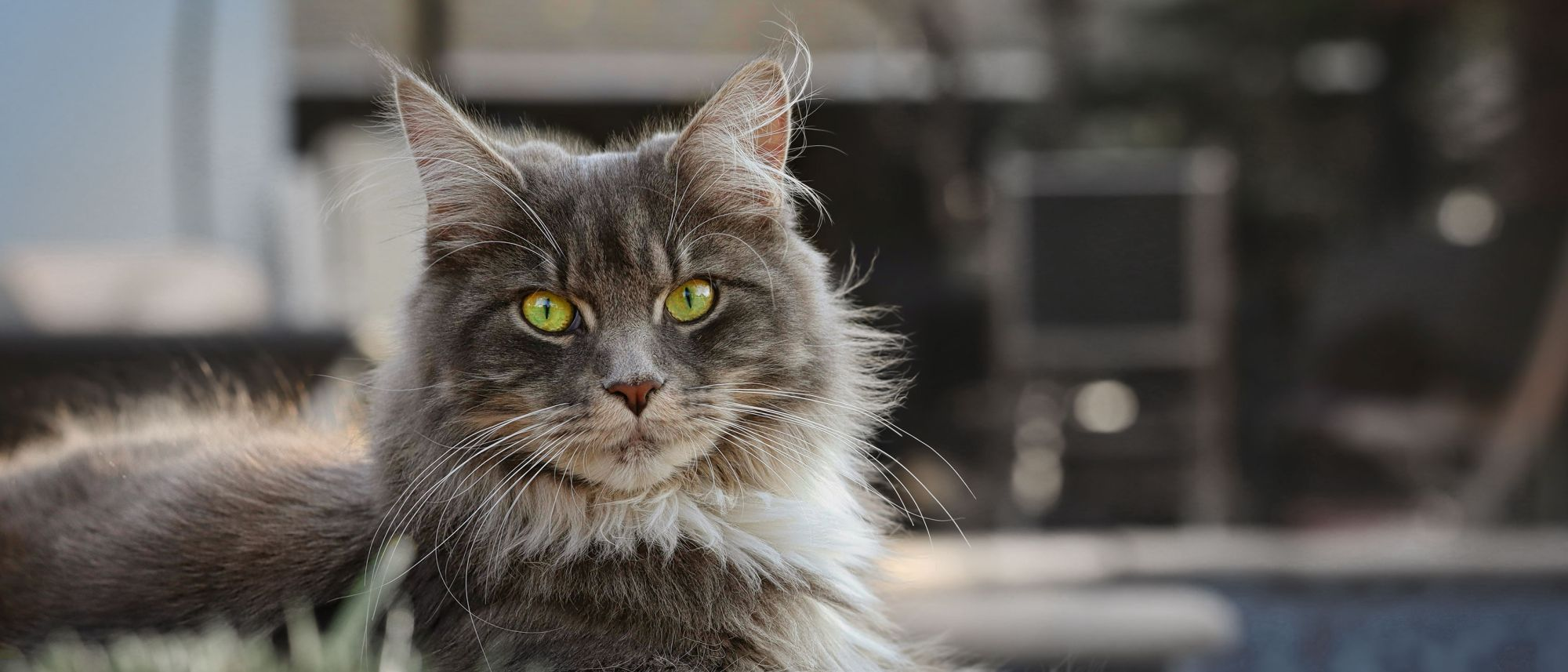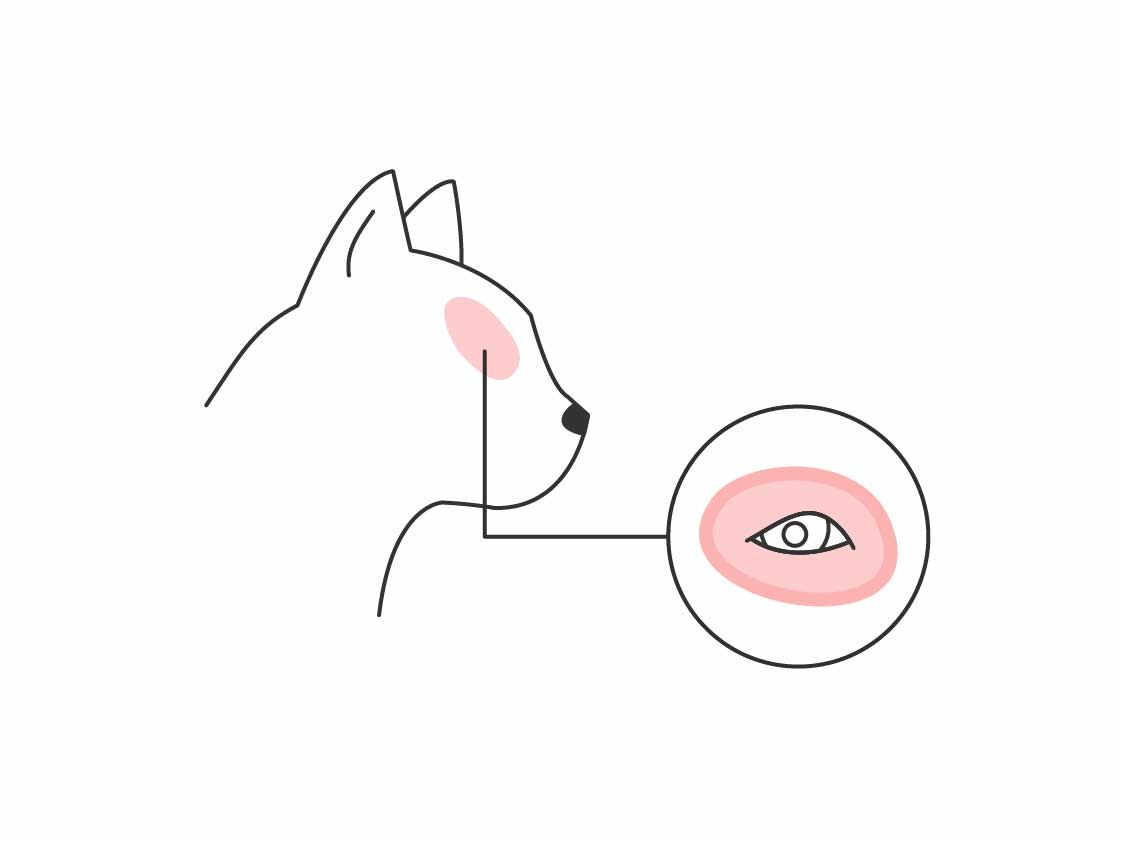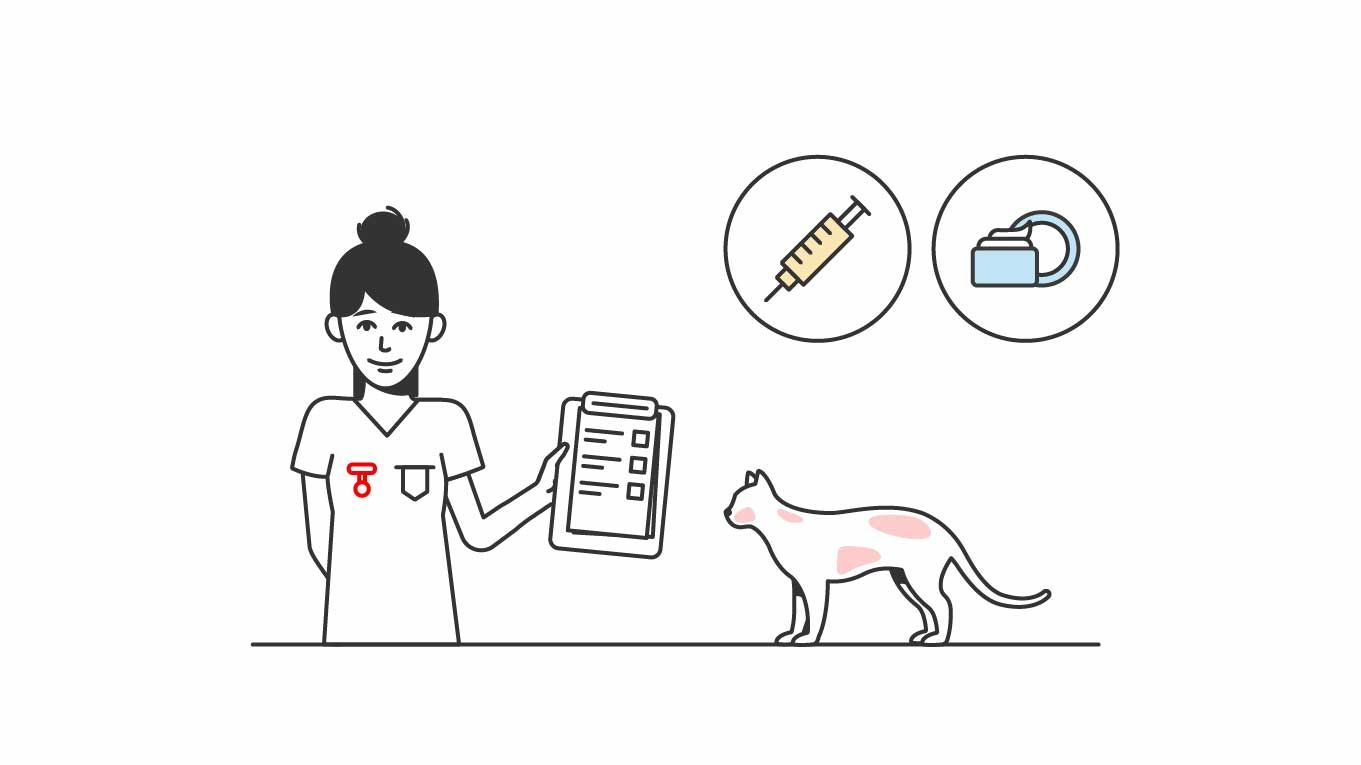Eye Conditions in Cats That Can Lead to Dermatitis Issues
Article

Dermatitis is a very common health issue for cats and is typically identified by swollen red skin.
Cats develop skin inflammation for many reasons. They may have allergies, be afflicted with parasites, or it could be a sign of an infection or an underlying disease.
Sometimes, dermatitis may be restricted to a small area, like a single paw. While in other cases it may affect multiple parts of the skin, such as the cat’s ears, face, and stomach.
The area around a cat’s eyes may also be more susceptible to dermatitis when it contracts an eye infection. In this article, we highlight some of the signs of eye conditions in cats and explain what can cause eye problems.
What Are the Common Signs of Eye Inflammation in Cats?
Looking at your cat’s eyes, you may notice:
- Redness and swelling on or around the eyelids and eyes
- Eye discharge – this may be clear, yellow, green, or white/cloudy
- Skin flakes, scales, and dry skin around the cat’s eyes
- A change in pigmentation to the surrounding skin
- Hair loss around the eyes
Cats with dermatitis around the eyes will often have very itchy skin, which may cause vigorous scratching and rubbing. This can worsen a cat’s condition and may lead to them developing a corneal ulcer from persistently rubbing or scratching around the eyes.
Depending upon the cause of your cat’s dermatitis, you may see signs elsewhere on their body. For example, they may also have a red crusty rash on their neck and back, a waxy discharge from their ears, or patches of thick, smelly, pigmented skin.

Why Do Allergies Cause Inflammation Around a Cat's Eyes?
Cats can develop allergies to many things, including fleas bites, some foods, and airborne particles like pollen. These substances are known as allergens.Sometimes, a cat’s immune system mistakes one of these allergens for a foreign invader and it activates a defensive response. This allergic reaction is harmful to a cat and may produce several signs, including skin inflammation.
When an allergen triggers inflammation in a cat’s eyes, the condition is known as allergic conjunctivitis.
If you’d like to discover more about cat allergies and the common causes, signs, and management, see Food Allergies in Cats and Environmental & Seasonal Allergies in Cats.
How Does Allergic Conjunctivitis Affect a Cat’s Eyes?
The conjunctiva are pink-colored membranes that cover the eyeball and the inner surface of each eyelid. Unlike us, cats have three eyelids per eye.When a cat has an allergic reaction, these membranes can become red and swollen and you may see your cat squinting or blinking more than normal.
You may also see a discharge from one or both of their eyes. The color of this discharge may help indicate the cause of the cat’s condition. If it’s white or clear, it could be an allergic reaction. If it’s yellow or green, it’s more likely to be a bacterial eye infection.
As a result of conjunctivitis, cats may also display signs of dermatitis around their eyes. Some of the other signs you may see include sneezing, coughing, itching, hair loss, and a discharge from the cat’s nose.
Cats with allergies to airborne substances like mold or dust have a higher probability of developing allergic conjunctivitis - especially if they’re young.
Your veterinarian will be able to recommend management options to ease their signs and limit the chances of future flare-ups.
How Can You Support Your Cat?
It's important to first speak to your veterinarian before taking any action. They may suggest eye drops, a saline wash, or an ointment to manage the immediate signs of conjunctivitis.

Dealing with an underlying allergy will usually require long-term management, however, and may require allergy shots or oral drugs. Sometimes, a change in diet is also needed.
How Can a Change in Diet Support a Cat with Allergic Conjunctivitis?
If your cat has a food allergy, your vet may suggest a hydrolyzed or novel protein diet to limit their exposure to certain proteins. These diets can also help to support a cat’s skin and gastrointestinal health.You can learn more in our article, Nutrition & Support for Cats with Food Allergies.
Related Articles
Like & share this page